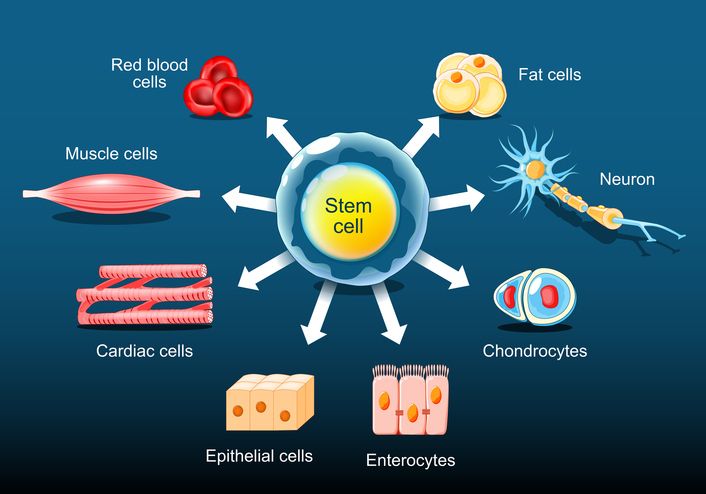
Author: Natalie Ng|Updated: 5 June 2025
Hair growth doesn’t always move at the pace you hope. Even when you're doing what feels right, a few everyday habits can quietly affect how fast your hair grows. Your hair growth speed is influenced by many factors, from how you care for your scalp to the way you handle your hair day to day. It’s easy to overlook the small things that might be slowing it down. Before trying new treatments or products, it helps to take a step back and spot what could already be working against your progress. Ahead, we’ll go through some common mistakes that may be getting in the way of healthy growth—and what to focus on instead.

Hair Growth Speed Slow Down Mistake 1: Washing Too Often and Using Harsh Shampoo
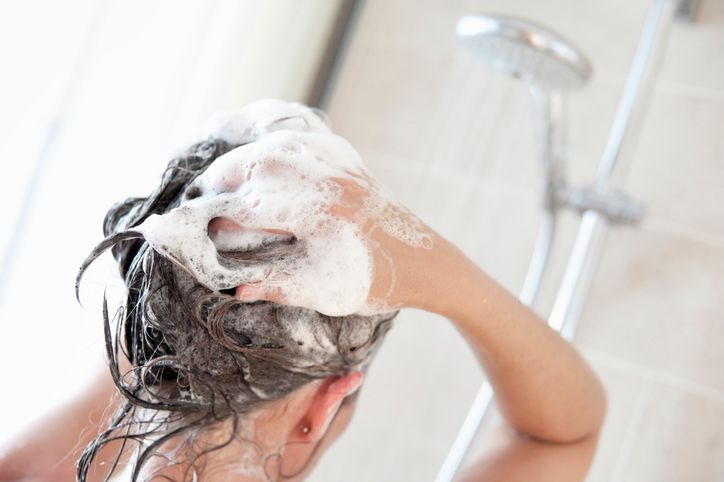
Overwashing can affect hair growth speed
Washing your hair too often can reduce hair growth speed without you realizing it. Frequent washing strips away the natural oils your scalp makes to protect and support your hair follicles. These oils help keep your scalp healthy and your hair strands strong. When they’re constantly removed, the scalp becomes dry, and your hair fibers may grow weaker over time.
Harsh shampoo ingredients can damage scalp and hair shaft
Many common shampoos contain sulfates and other strong cleansing agents. These can irritate the scalp, disrupt the hair growth cycle, and damage the outer layer of the hair shaft. Over time, this may lead to increased shedding, dry scalp, and hair thinning. In some cases, it can even slow down new hair growth.
Gentle care supports healthy hair growth
Try washing your hair 2 to 3 times a week, depending on your hair type and scalp condition. Choose a gentle shampoo that doesn’t contain sulfates or strong fragrances. Focus the shampoo on the scalp, not the ends, and rinse with lukewarm water. This helps preserve the natural barrier that keeps your hair healthy and gives your hair follicles the right environment to promote hair growth.

Hair Growth Slow Down Mistake 2: Poor Diet and Missing Nutrients

Diet affects hair growth speed
Your hair growth reflects what you eat. A poor diet slows the production of healthy hair strands and can weaken the structure of your scalp hair over time. Hair follicles rely on certain nutrients to keep growing strong, and without them, hair can grow slower, break easily, or start thinning.
Nutrients your hair needs to grow
Hair is made of protein, and it also depends on vitamins and minerals to stay strong and grow at a regular rate. Each nutrient plays a different role in supporting the hair growth cycle.
Iron
Supports oxygen delivery to hair follicles and helps reduce shedding and brittle strands.
Biotin
Helps with keratin production, which supports stronger hair structure and encourages new hair growth.
Vitamin D
Activates hair follicles and supports the anagen phase of the growth cycle, helping hair grow faster.
Protein
Forms the building blocks of the hair shaft and supports the strength of hair fibers throughout the growth cycle.
Eating habits that support hair growth
To support healthy hair, eat a balanced diet that includes lean meats, leafy greens, eggs, beans, seeds, and nuts. Low protein intake and nutrient deficiency can lead to slower hair growth and even hair loss in some cases. Staying hydrated is also important—your scalp needs water to keep your follicles working properly. If you're not meeting your needs through food, some people turn to supplements, especially those formulated to promote hair growth.
In some cases, a lack of certain nutrients like iron or vitamin D can affect hair growth speed more severely. If you’re noticing bald patches, hair thinning, or reduced growth over a long period, it may be helpful to get a blood test and talk to a healthcare provider.
Read More
Book Now to Experience
F8 Hair Regrowth Treatment
1 Minute Self-Registration
Date should not be before minimal date

Hair Growth Slow Down Mistake 3: Heat Styling Without Protection
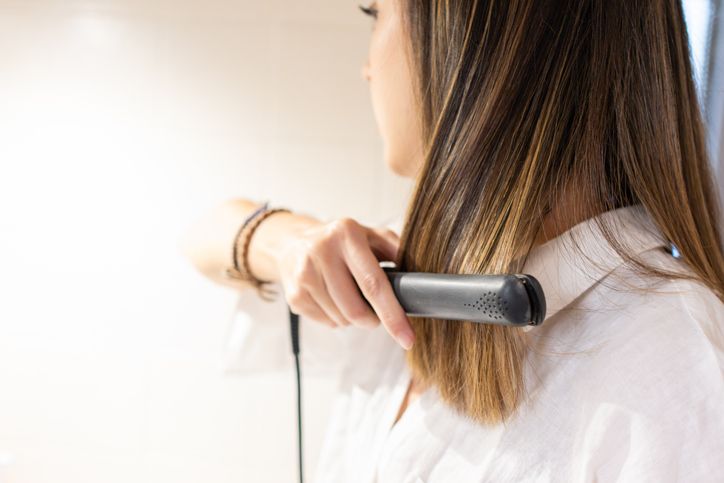
High heat damages hair structure
Using heat tools like flat irons, curling wands, or blow dryers without protection can slow down hair growth by weakening the hair shaft. High temperatures break down the protective cuticle layers that cover each strand. Once those layers are damaged, the inner structure of the hair becomes exposed and more likely to split or snap.
When the cuticle is worn down, your hair starts breaking faster than it can grow. This leads to shorter lengths, fewer visible results, and a rougher texture overall. The result is often mistaken for slow hair growth when the real issue is breakage along the shaft.
Heat protectant helps reduce hair damage
Heat protectant sprays or serums form a barrier that helps reduce direct damage from styling tools. They coat each strand with a lightweight layer that helps maintain moisture and limits protein breakdown when exposed to high heat.
For best results, apply heat protectant to damp or dry hair before using any heat tool. Spray it 6 to 8 inches away from your head to ensure even coverage. Don’t forget areas like the back of your head and near your roots. Keep the temperature of your tools under 365°F and avoid holding them in one spot for too long. This simple step supports stronger strands and better length retention, especially if you use heat often.

Hair Growth Slow Down Mistake 4: Tight Hairstyles and Aggressive Brushing
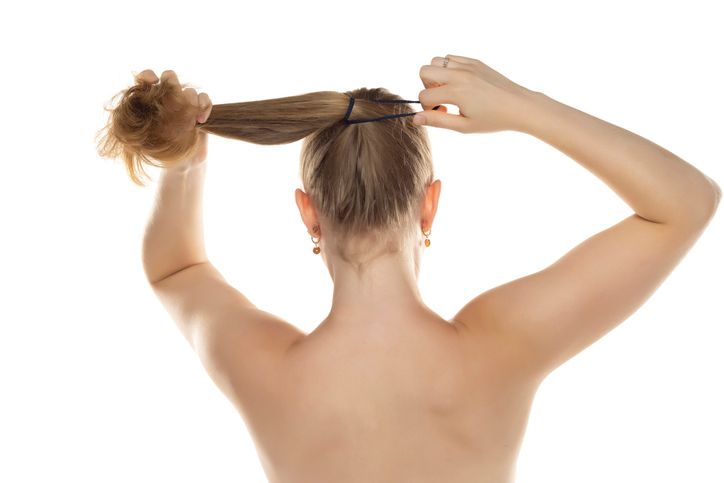
Tension and pulling can damage hair follicles
Wearing tight ponytails, buns, or braids every day puts constant stress on your scalp. This pressure can lead to traction alopecia—a type of hair loss caused by repeated pulling on the hair follicles. Over time, the stress weakens the roots and slows down new hair growth. If left unchecked, it can even lead to bald patches, especially around the hairline or crown.
Aggressive brushing also causes damage, especially when done on wet hair. Wet hair strands are more fragile and more likely to snap when pulled. Brushing too hard can break the hair shaft and increase split ends, both of which make your hair grow slower by causing more frequent breakage.
Gentle handling protects hair growth
Switch to looser styles that give your scalp a break. Vary your hairstyle every few days to avoid putting repeated pressure on the same areas. When tying your hair, use soft scrunchies or fabric-covered bands instead of rubber ties.
For brushing, start at the ends and slowly work your way up using short, gentle strokes. A wide-toothed comb or a brush made for detangling is best—especially on wet hair. At night, leave your hair down for at least 8 hours or loosely braid it to reduce tension while you sleep. This gives your scalp time to rest and supports regular hair growth over time.
Book Now to Experience
F8 Hair Regrowth Treatment
1 Minute Self-Registration
Date should not be before minimal date

Hair Growth Slow Down Mistake 5: Skipping Regular Trims
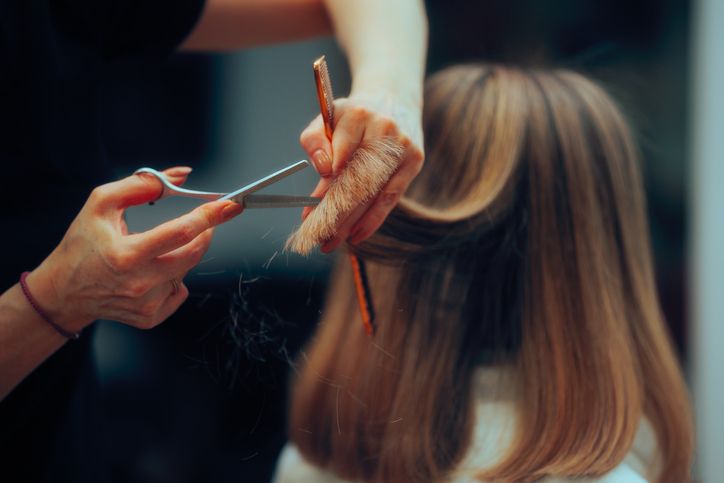
Ignoring split ends can affect overall growth
While trimming may seem counterintuitive when you're trying to grow your hair, skipping it allows split ends to move further up the hair shaft. When this happens, more length is lost over time due to breakage. Damaged ends make hair look thinner, uneven, and shorter, even if it’s technically growing at a normal rate.
Split ends can’t be repaired. Once they form, they need to be trimmed off to prevent them from traveling up the strands and causing more damage. Hair that breaks easily won’t retain length, which can make it seem like your hair grows slower than average.
Trim schedule for healthy hair maintenance
Trimming doesn’t need to be drastic. Removing as little as a quarter of an inch every 8 to 12 weeks helps maintain healthy ends and improve the overall appearance of your hair. If you go longer than 12 weeks without a trim, you’re more likely to see thinning or uneven lengths.
A regular trim schedule supports stronger hair and helps reduce the need for more major cuts down the line. Keeping ends clean and damage-free gives your hair the best chance to grow longer and look fuller over time.

Hair Growth Slow Down Mistake 6: Using the Wrong Pillowcase Material

Friction from fabric can lead to breakage
Cotton pillowcases may feel soft, but they can still cause friction against your hair as you move during sleep. This friction can lead to small breaks in the hair shaft over time, especially if your strands are already dry or damaged. Even though the damage may not be dramatic overnight, the effects build up—leading to thinner hair and reduced length over time.
Hair types that are naturally more fragile, such as fine or curly hair, may be more prone to this kind of friction-related damage. Repeated exposure can affect hair growth speed by shortening how long the strands stay intact before breaking off.
Fabric choice and hair preparation both matter
Silk and satin pillowcases are smoother and cause less resistance when your hair rubs against them. They reduce tangling and help hair glide across the surface without snagging. While current research hasn’t fully confirmed that one fabric leads to faster hair growth, many people find less breakage and frizz with these softer materials.
Regardless of the fabric you choose, how you prepare your hair before bed makes the biggest difference. Tying your hair loosely, braiding it gently, or using a satin bonnet can all help reduce unnecessary pulling. Clean pillowcases also matter—build-up from oils or product can affect the scalp and hair health if not washed regularly. Changing your pillowcase every 6 to 12 months and washing it weekly can support healthier hair conditions as it grows.
Book Now to Experience
F8 Hair Regrowth Treatment
1 Minute Self-Registration
Date should not be before minimal date

How Fast Does Hair Really Grow?

Average hair growth rate and what affects it
Hair growth varies from person to person, but on average, scalp hair grows about half an inch per month—or roughly 6 inches per year. This rate can be slightly higher or lower depending on many factors, including your age, genetics, hair type, and overall health. While some people may see new hair growth more quickly, others may feel their hair grow slower due to things like nutrient deficiency, stress, or damage.
Hair doesn’t grow continuously. Each strand follows a natural pattern made up of three stages: the anagen phase (growth), catagen phase (transitional), and telogen phase (resting). The anagen phase can last several years, and the longer your hair stays in this phase, the longer it can grow. The telogen phase, which is when strands fall out and are replaced, typically lasts a few months.
Factors that influence your hair growth speed
How fast your hair grows depends on more than just time. Genetics set the baseline, but external and internal conditions—like your diet, mental health, hair care habits, and scalp condition—play a big role. For example, poor scalp circulation or ongoing inflammation may interrupt the growth cycle and reduce the chance for long, healthy strands to grow.
Your hair type may also make growth seem slower or faster. People with curly or coily hair may not notice length changes as easily as those with straight hair, even if the actual growth rate is similar. If you're trying to figure out how many inches your hair should grow in a given time, track it over several months rather than weeks to see meaningful progress.

Importance of Scalp Care in Supporting Hair Growth

Healthy scalp, stronger follicles
A healthy scalp is the foundation of healthy hair. Each strand grows out of a follicle located beneath the skin on your scalp, and when that area is clean, nourished, and balanced, hair growth speed improves. If the scalp is neglected, it can lead to clogged follicles, irritation, or poor circulation—all of which affect how strong and fast your hair strands grow.
Build-up from styling products, oil, and dead skin can create a barrier that blocks new hair from growing out properly. Over time, this can also cause itching, inflammation, and excess shedding.
Scalp treatments and products that help
Adding scalp-focused steps to your hair care routine can support new hair growth and improve the health of existing strands. Look for lightweight leave-in treatments or scalp serums that contain ingredients like salicylic acid, tea tree oil, or niacinamide. Natural oils such as castor oil are also popular for nourishing the scalp and supporting hair strength and shine. These can help remove build-up and refresh the scalp without stripping it.
Using conditioner correctly also helps—focus it on the mid-lengths and ends rather than the scalp to avoid weighing down the roots. For dry or flaky scalps, consider once-a-week scalp masks or gentle exfoliating scrubs to restore balance and support the growth cycle.
Book Now to Experience
F8 Hair Regrowth Treatment
1 Minute Self-Registration
Date should not be before minimal date

When Scalp Care Alone Isn’t Enough

Daily habits, scalp-friendly products, and a balanced diet are all important for healthy hair growth. But sometimes, these steps aren’t enough—especially if your follicles are underperforming, your hair strands are breaking faster than they grow, or your scalp shows signs of chronic imbalance. In cases like these, extra support may be needed to get your hair growth back on track. Certain medical conditions can disrupt the hair growth cycle and may require medical evaluation or treatment.
That’s where non-invasive treatments designed to improve blood flow, activate follicles, and restore scalp conditions can make a real difference. They don’t replace good hair care, but they can enhance it—giving your scalp a better environment to support healthy growth long-term.

Support Hair Growth with F8 Hair Regrowth Treatment
F8 Hair Regrowth Treatment offers a non-invasive way to support scalp health and boost hair growth speed. While improving your routine—through diet, gentle styling, and regular trims—lays the foundation for healthy hair, professional treatments can help address deeper issues like slow blood flow, weak follicles, or oil imbalance that might continue to affect hair growth.
How the treatment works
The F8 Hair Regrowth Treatment combines low-energy laser technology with a targeted hair growth serum to stimulate the scalp and improve overall follicle function. During each session, a trained therapist uses the handpiece to evenly deliver laser energy across the scalp. This activates inactive hair follicles, strengthens the hair papilla, and improves microcirculation through nearby capillaries.
After laser application, a high-quality serum is applied to the scalp. The laser helps the serum absorb more effectively, cleansing pores, calming excess oil production, and creating the right conditions for new hair to grow. With regular sessions, the scalp becomes more balanced and follicles are better supported throughout the hair growth cycle.
Advantages of the F8 Hair Regrowth Treatment
• Non-invasive and safe: No injections or recovery time required. The low-energy laser works without damaging the skin.
• Scalp-focused care: Helps unclog pores, control excess sebum, and hydrate the scalp—reducing scalp conditions that may slow hair growth.
• Encourages stronger growth: Improves blood flow and nutrient supply to each follicle, supporting the anagen phase and helping hair grow faster.
• Suitable for both men and women: Safe and comfortable for a wide range of users with scalp or hair thinning concerns.
• No downtime: You can resume your usual activities right after treatment.
F8 is especially useful if you’ve noticed your hair strands growing slower than the average hair growth rate, or if home care routines alone haven’t delivered the results you want. Pairing F8 with good scalp care and proper nutrition can give your follicles the added support they need.
Book your consultation today to see how F8 Hair Regrowth Treatment can help support your journey to fuller, healthier hair.
New Beauty's F8 Hair Regrowth TreatmentBook Now to Experience
F8 Hair Regrowth Treatment
1 Minute Self-Registration
Date should not be before minimal date
FAQ
How can I tell if my hair growth speed is slower than normal?
Most humans experience an average hair growth rate of around half an inch per month. If you notice little to no length change over several months despite healthy habits, or if you’re shedding more hair than usual without regrowth, your growth may be slower than normal. Tracking progress with photos and measuring hair length every few weeks can help you spot changes. If there’s no visible growth or you notice more thinning, it may be time to explore potential causes like iron deficiency, stress, a stressful event, or scalp issues.
Can certain hairstyles or hair types affect how fast hair grows?
Your natural hair growth speed stays fairly consistent, but how your hair looks as it grows can depend on your hair type. For example, people with coily or curly hair may not see visible length as quickly as those with straight hair, even if both grow at the same rate. Tight hairstyles that pull on the roots can also affect hair follicles and slow growth by causing breakage or traction alopecia. Loose styles are better for maintaining length over time.
Does age affect how fast hair grows?
Yes, age can impact the hair growth cycle. As people get older, the anagen phase—the active growth phase—tends to shorten. This means that new hair growth slows down and follicles spend more time in the resting (telogen) or transitional (catagen) phases. Many people also experience changes in scalp oil production, hair strand thickness, and follicle activity, all of which can affect how fast hair grows.
Can mental health or poor sleep affect my hair growth?
Mental health has a direct effect on physical health—including the hair. Chronic stress or lack of sleep can trigger a shift in the hair growth cycle, pushing follicles into the telogen phase early. This can result in hair thinning or slower visible growth. Hormonal shifts tied to stress may also lead to temporary shedding or reduced strand strength. Supporting mental wellness and getting regular sleep helps maintain scalp function and promotes new hair growth.
Is there a way to naturally promote faster hair growth?
While genetics set your base growth rate, there are ways to support hair growth speed naturally. Eating enough protein, drinking water, and including certain nutrients like biotin, iron, and vitamin D can help. Scalp massage may also increase blood flow to the follicles. Avoiding excessive heat, reducing chemical exposure, and limiting tight hairstyles all help reduce breakage so your hair can retain its length. Consistency in care and patience are key when trying to grow your hair faster naturally.
Recommended Articles
COPYRIGHT© NEW BEAUTY MANAGEMENT LIMITED 2025. ALL RIGHT RESERVED.


